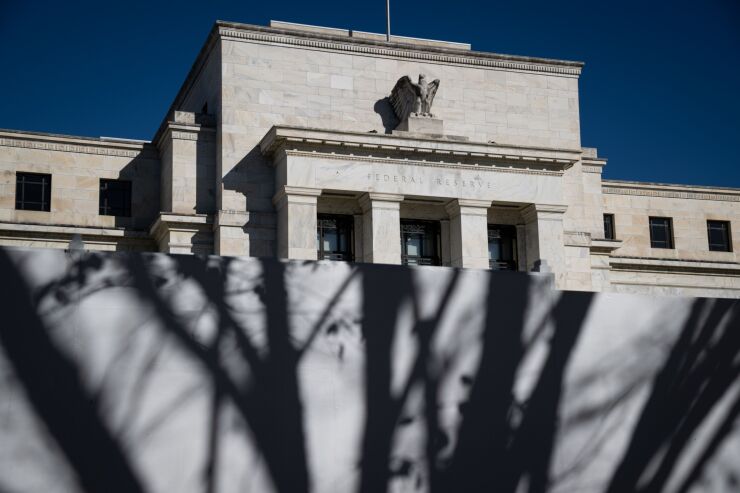
Legislating in 2010, the authors of the
Congress could have made it a simple assessment of the Federal Reserve Banks, but it didn't. It authorized only and specifically a share of the combined earnings. Using some of the earnings that the Fed would otherwise have to turn over to the Treasury made taking this money politically more palatable. But why did the congressional majority of 2010 put this unusual, indeed unique, funding method into the statute in the first place?
It was a clever stratagem of the Democratic majority of that particular Congress to prevent future congresses from being able to discipline the CFPB through the power of the purse.
This gambit obviously depended on the future Federal Reserve having some combined earnings
In 2010, you might readily have assumed the Fed would continue to have ample earnings in the future. You would probably have thought it impossible for the Fed to experience huge losses.
But what you thought impossible has nevertheless happened. Big time. The Fed began losing money during September 2022 and has had no earnings since. Instead,
The latest inflation news is almost sure to result in a 25 basis point cut next week, but some are still hoping for 50 basis points, as well as reductions totaling almost 200 basis points through the end of 2025, Wolters Kluwer found.
These losses far exceed and have wiped out the Fed's retained earnings of merely $7 billion and its paid-in capital of $36 billion. Under standard accounting, the Fed's capital is now negative $150 billion. There are no earnings, there are no retained earnings and there is no capital.
The losses are not, as is sometimes claimed, "mere paper losses." They are real, operating, cash losses, and the cash is gone. The Fed is suffering negative net interest income because its cost of funds is much greater than the income on its earning assets. Its net interest income for the first six months of 2024 was a negative $38 billion. Its combined earnings were a negative $43 billion. The Fed had a mark-to-market loss on June 30, of over $1 trillion.
This all happened because the Fed made its balance sheet into the equivalent of the world's biggest savings and loan, with several trillion dollars of very-low-yielding, long-term fixed-rate investments funded by floating-rate liabilities. Whether this was a good idea or not from the viewpoint of a higher monetary strategy, it was a distinctly bad idea from the viewpoint of the CFPB. The Fed has for 23 months had nothing to send the CFPB.
The Fed stopped sending distributions of its earnings to the Treasury in September 2022 because there were no earnings to distribute. To comply with the law, the Fed should have stopped sending payments to the CFPB at the same time for the same reason. It is not authorized to distribute nonexistent earnings. It appears that the Fed has made, and the CFPB has accepted and spent, almost two years of
Some people object that the Supreme Court ruled that Dodd-Frank's CFPB funding provisions are constitutional. This is true, but not relevant. The Court's ruling is perfectly consistent with the illegality of the Fed's payments to the CFPB when the Fed has no earnings. The Court found the statute to be constitutional. But the statute itself provides that the payments to the CFPB must come from the Fed's combined earnings, and the Fed has no earnings as a matter of simple fact. Q.E.D.
The CFPB, if prudent, should be planning how to approach Congress to ask for the appropriations it needs to stay in business. It should also be requesting the money it needs to reimburse the Fed for the funds the CFPB has already illegally received. Congress should be thinking about whether and with what conditions it wishes to appropriate funds to the CFPB until someday when the Fed again has some combined earnings. Finally, we may observe that the Fed's accumulated losses will not be offset for a long time.






